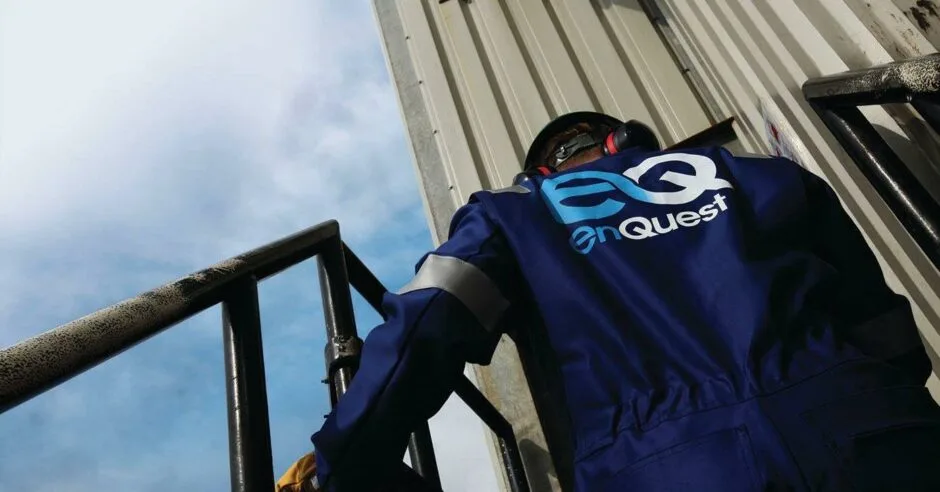In a remote harbour just north of Inverness, contractors are busy working on a giant metal structure whose bright colours stand out against the horizon. The Maersk Innovator offshore oil rig is getting ready to leave Cromarty Firth to drill at least three development wells in the North Sea. It was a very different scene two years ago when the Cromarty Firth was full of idle rigs. The oil price crash which began in late 2014 and saw Brent crude plummet from $115 a barrel to less than $30 in January 2016, drastically reducing exploration drilling in the North Sea. Oil and gas producers battened down the hatches, cut costs and curtailed operations in what was one of the world’s most expensive places for extracting fossil fuels. The Maersk rig is one of five that has arrived in Cromarty Firth since the start of the year for maintenance and repair — the highest number to come in for this sort of work since 2010. Three of the rigs have already departed to drill. The numbers may be small but the increased activity is being greeted by industry executives as evidence of the first green shoots of a wider recovery across the North Sea. “From where we’ve been, it’s encouraging to see this,” said Bob Buskie, chief executive of the Cromarty Firth port authority. The new contracts have boosted employment levels at the port: there are now close to 1,400 workers — almost double the level of last year. At Semco Maritime, the lead engineering contractor on the Maersk rig, the increased workload has enabled the company to hire four new engineers over the past six months in its local office. It has also engaged more than 200 workers through the local supply chain, said Neil Robertson, operations manager. Mr Buskie singled out two factors that have helped “give oxygen to the industry”: the higher oil price — Brent crude has traded at more than $60 a barrel since January — and the success of two recent licensing rounds in the UK North Sea. The 30th offshore round, held in May, saw a total of 123 licences offered across the UK continental shelf to 61 companies including Royal Dutch Shell, BP and several smaller players. Although the round focused mainly on previously explored or “mature” areas of the North Sea, the UK Oil and Gas Authority described it as “transformational” because companies had made firm commitments to drill eight exploration or appraisal wells and to carry out nine new 3D seismic surveys. “We are seeing a steady increase in infill drilling at existing fields,” said Gunther Newcombe, director of operations at the OGA, which was formed in 2015 to help maximise recoveries from the UK continental shelf. Working with the government, key changes have included more attractive fiscal measures to make the basin more competitive. The interest from the licensing rounds should boost exploration activity, which remains at low levels, according to industry executives. Morten Kelstrup, chief commercial and innovation officer at Maersk Drilling, said the company had already seen “an uptick” in the market focused on appraisal and development wells. Its Maersk Innovator rig will begin work for Nexen Petroleum next month at the Buzzard field, the UK’s largest producing oilfield in the North Sea. Investment is starting to flow back into the basin, with companies preparing to plough £5bn into new capital projects this year, said Oil & Gas UK, the industry trade body, in March. Wood Mackenzie, the consultancy, said it expected production from the North Sea to average close to 2m barrels of oil equivalent a day this year — the highest level since 2010. The increased output, coupled with lower operating costs, has also helped boost oil and gas receipts to the UK government. Last year, the industry failed to generate any revenues for the Treasury, with tax receipts on production falling below zero. For 2017-18, however, returns to the Treasury were £1.1bn. A new breed of oil and gas producer has helped to drive some of the renewed activity, notably a clutch of private-equity backed players that have been buying mature assets from big energy groups with the aim of breathing new life into them. “Anecdotally, we are hearing things are starting to pick up,” said Kevin Swann, analyst at Wood Mackenzie. He believes the growing prominence of new players in the basin means there is more development drilling going on “which is extending the life of older assets”. Despite the uptick in overall drilling activity, experts stressed it was from a low base. The lack of a full blown recovery in the UK North Sea is evidenced by how rig utilisation rates are still lower now compared to before the oil price crash. “It would be foolish to call it the start of an upturn,” said Mr Robertson. “But there are definite green shoots.”
Published: 30-07-2018














